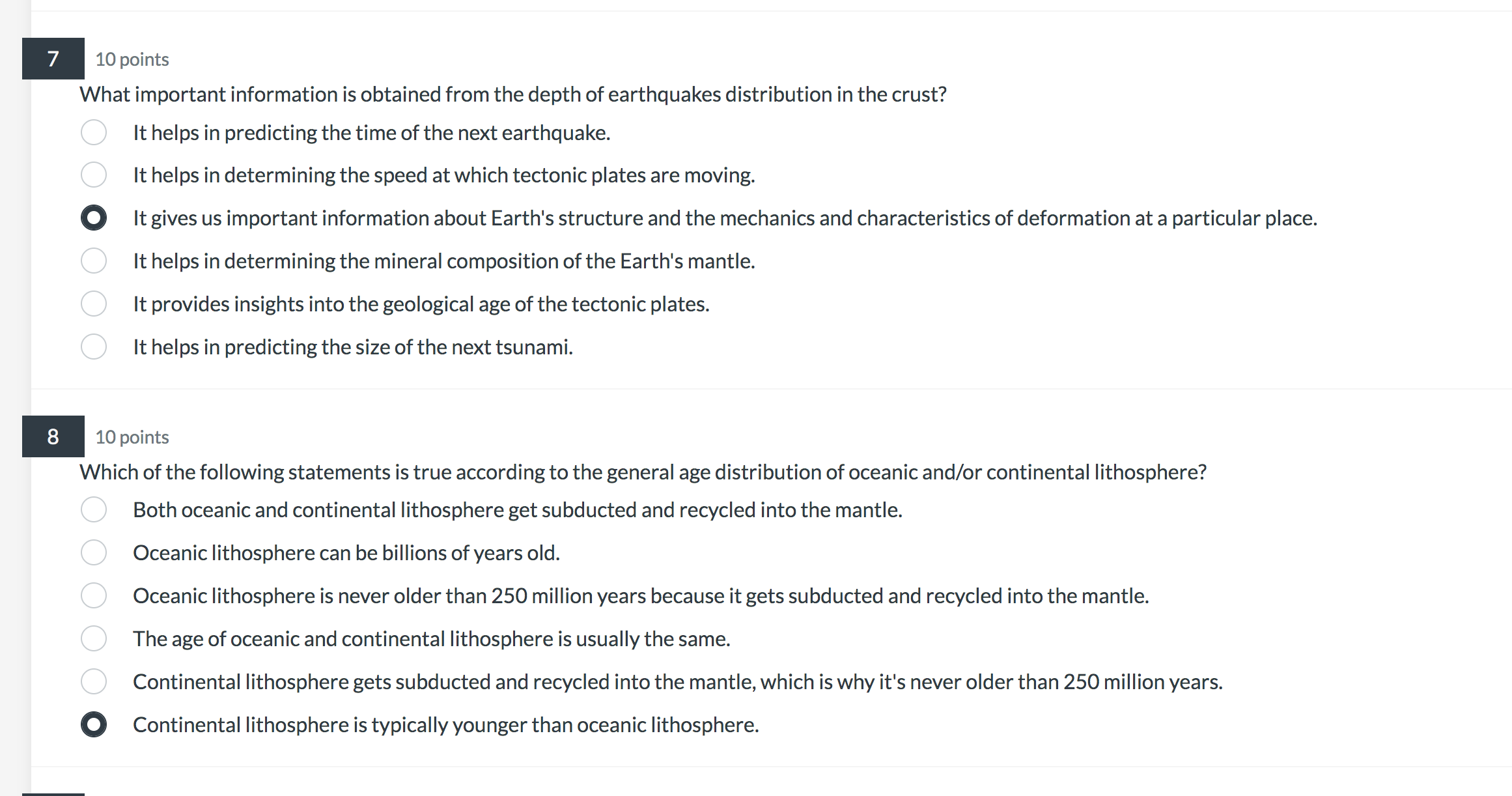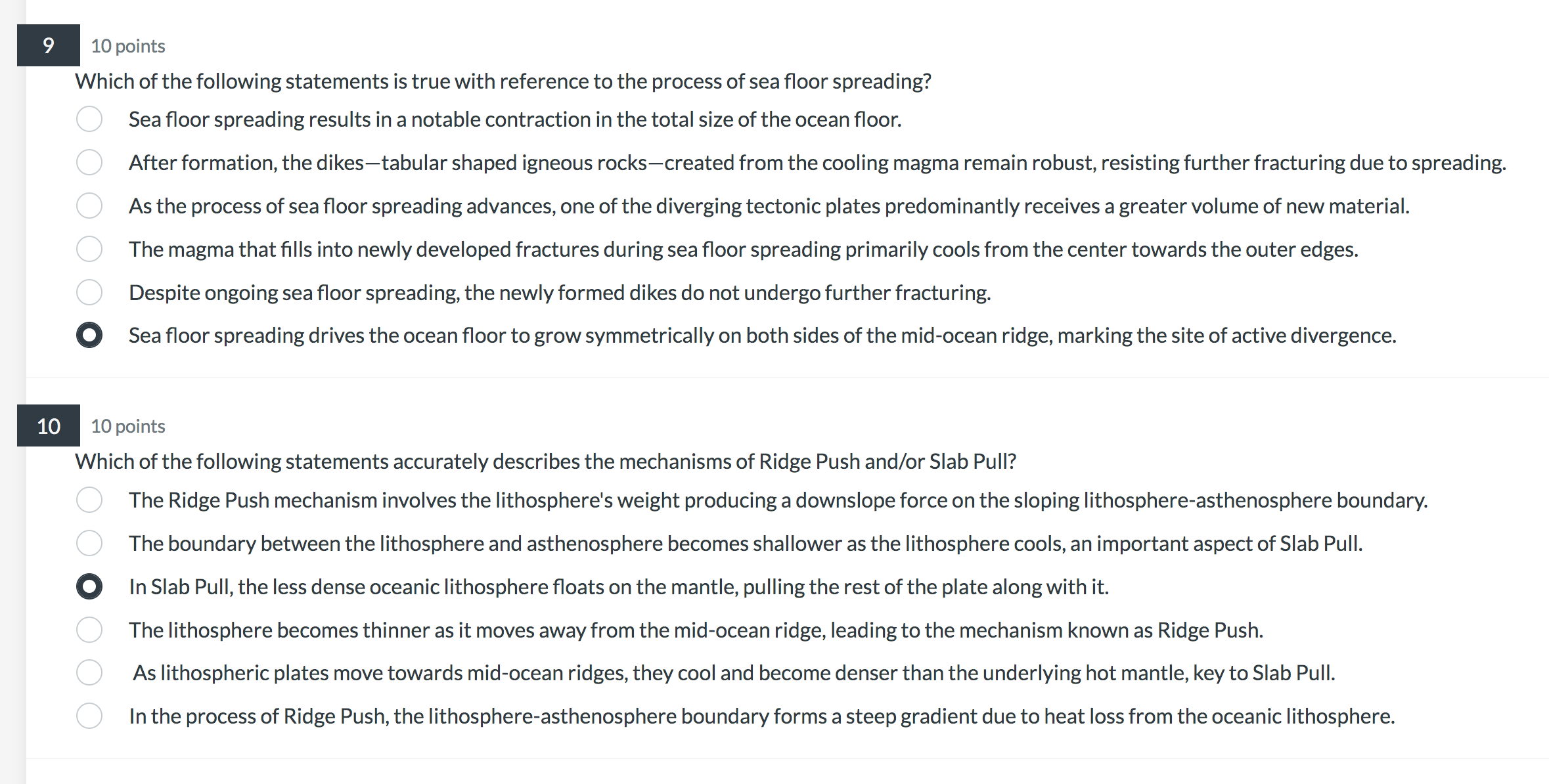Home /
Expert Answers /
Earth Sciences /
what-important-information-is-obtained-from-the-depth-of-earthquakes-distribution-in-the-crust-it-pa624
(Solved): What important information is obtained from the depth of earthquakes distribution in the crust? It ...


What important information is obtained from the depth of earthquakes distribution in the crust? It helps in predicting the time of the next earthquake. It helps in determining the speed at which tectonic plates are moving. It gives us important information about Earth's structure and the mechanics and characteristics of deformation at a particule It helps in determining the mineral composition of the Earth's mantle. It provides insights into the geological age of the tectonic plates. It helps in predicting the size of the next tsunami. 10 points Which of the following statements is true according to the general age distribution of oceanic and/or continental lithosphere? Both oceanic and continental lithosphere get subducted and recycled into the mantle. Oceanic lithosphere can be billions of years old. Oceanic lithosphere is never older than 250 million years because it gets subducted and recycled into the mantle. The age of oceanic and continental lithosphere is usually the same. Continental lithosphere gets subducted and recycled into the mantle, which is why it's never older than 250 million years. Continental lithosphere is typically younger than oceanic lithosphere.
10 points Which of the following statements is true with reference to the process of sea floor spreading? Sea floor spreading results in a notable contraction in the total size of the ocean floor. After formation, the dikes - tabular shaped igneous rocks-created from the cooling magma remain robust, resisting further fracturing due to spreading. As the process of sea floor spreading advances, one of the diverging tectonic plates predominantly receives a greater volume of new material. The magma that fills into newly developed fractures during sea floor spreading primarily cools from the center towards the outer edges. Despite ongoing sea floor spreading, the newly formed dikes do not undergo further fracturing. Sea floor spreading drives the ocean floor to grow symmetrically on both sides of the mid-ocean ridge, marking the site of active divergence.
Expert Answer
7.The depth of earthquakes distribution in the crust does not directly help in predicting the time o...